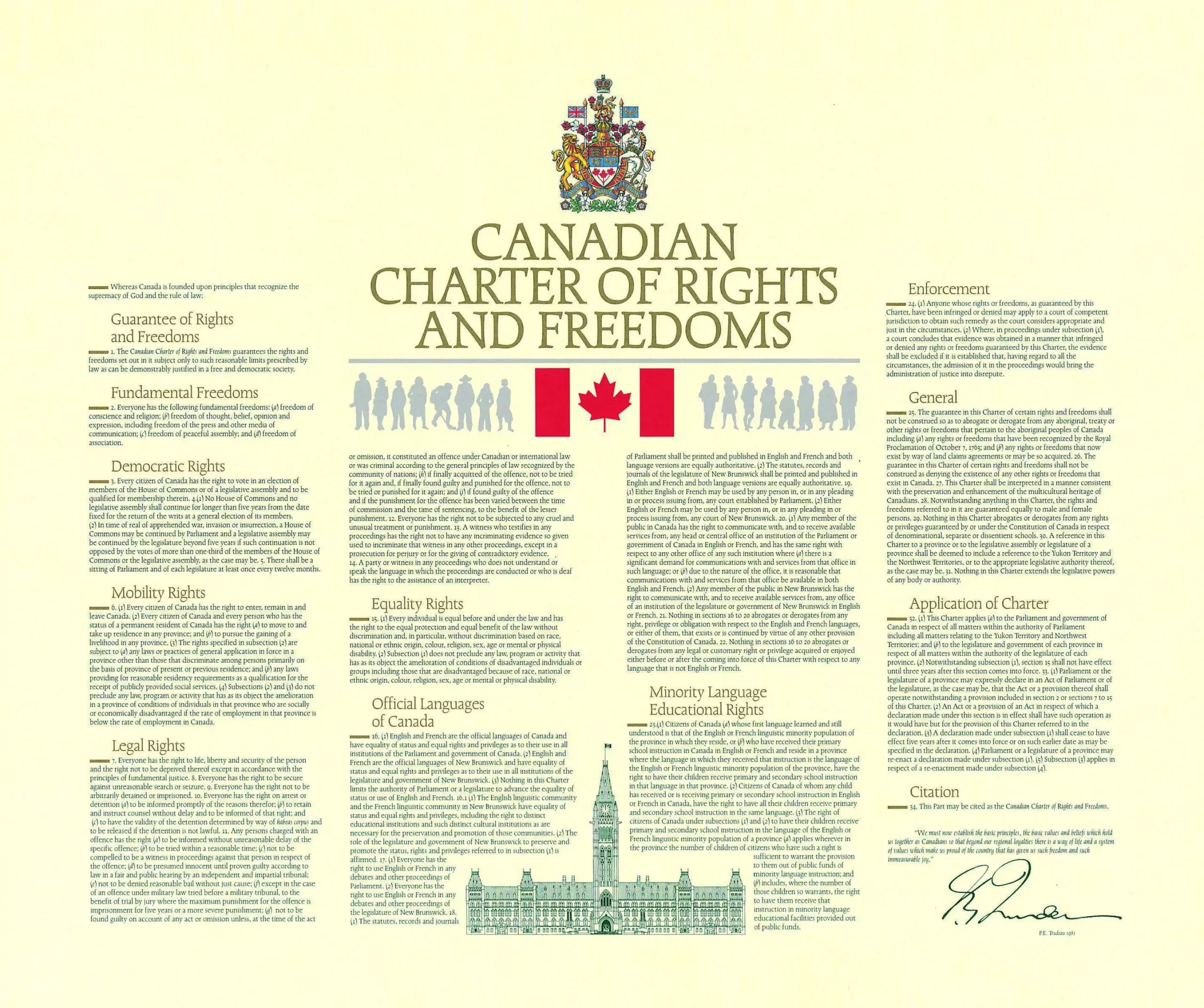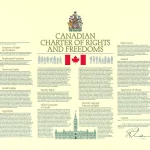Understanding Canada's Charter of Rights and Freedoms

Canada's Charter of Rights and Freedoms, often referred to simply as the Charter, is a foundational document that underpins the Canadian legal system and shapes the country's democratic values. Enacted in 1982 as part of the Constitution Act, the Charter guarantees essential rights and freedoms to all Canadians. In this blog post, we'll explore the significance and key aspects of Canada's Charter of Rights and Freedoms.
The Birth of the Charter of Rights and Freedoms
Before the Charter came into effect, Canada did not have a comprehensive bill of rights at the federal level. Instead, rights were protected through various statutes and common law. The Charter marked a significant milestone in Canadian history, codifying fundamental rights and freedoms, and ensuring they could not be easily altered by future governments.
Key Provisions and Freedoms
The Charter encompasses a wide range of rights and freedoms, including:
1. Fundamental Freedoms
These freedoms include freedom of conscience and religion, freedom of thought, belief, opinion, and expression, and freedom of peaceful assembly and association. These rights are essential for the flourishing of democratic societies, allowing individuals to express themselves, assemble, and associate freely.
2. Legal Rights
The Charter guarantees several legal rights, such as the right to a fair trial, the right to be informed of the reasons for arrest or detention, and the right to remain silent when questioned by authorities. These rights are crucial in protecting individuals from arbitrary actions by the state.
3. Equality Rights
The Charter prohibits discrimination based on various grounds, including race, gender, religion, and disability. It ensures that all Canadians are equal before and under the law, promoting inclusivity and social justice.
4. Mobility Rights
These rights allow Canadians to move and reside in any province or territory, seek employment, and gain access to educational opportunities without facing undue restrictions.
5. Minority Language Education Rights
The Charter recognizes the importance of linguistic diversity in Canada. It guarantees the right to education in either English or French for linguistic minority communities.
6. Indigenous Rights
While the Charter does not specifically address Indigenous rights, it is interconnected with various agreements, treaties, and Supreme Court decisions that have shaped Indigenous rights and self-governance in Canada.
Balancing Rights and Limits
While the Charter grants fundamental rights and freedoms, it also recognizes that these rights are not absolute. Section 1 of the Charter allows for reasonable limits on these rights if they can be justified in a free and democratic society. This "reasonable limits" clause ensures that rights are not used to infringe upon the rights and safety of others.
Impact and Significance
Canada's Charter of Rights and Freedoms has had a profound impact on the country's legal landscape and society as a whole. It has been used in numerous legal cases to challenge government actions, protect minority rights, and advance the causes of justice and equality. The Charter is a testament to Canada's commitment to human rights, democratic principles, and the rule of law.
Canada's Charter of Rights and Freedoms is not just a legal document; it's a cornerstone of the nation's identity and values. It stands as a model for the protection of individual rights and freedoms in democratic societies worldwide. As Canadians, we owe much of our civil liberties and the strength of our democracy to this remarkable piece of legislation, which continues to evolve and shape our nation's journey towards a more just and inclusive society.

